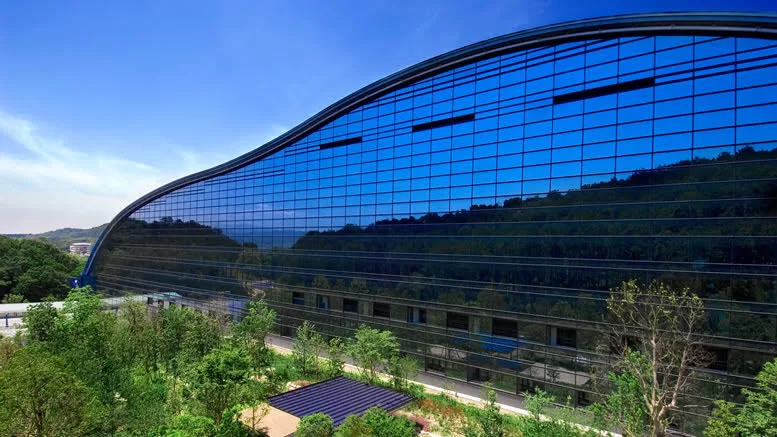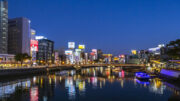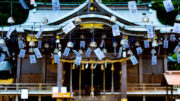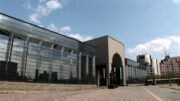 Situated in the historic city of Dazaifu, just a short distance from Fukuoka, the Kyushu National Museum stands as a modern cultural beacon that showcases Japan’s rich history and its connections with Asia. As one of Japan’s four national museums, it offers visitors a unique opportunity to explore the cultural and historical tapestry of Kyushu and beyond, set within a stunning architectural marvel. Opened in 2005, this museum is not just a repository of artifacts but a gateway to understanding Japan’s deep-rooted relationships with its Asian neighbors.
Situated in the historic city of Dazaifu, just a short distance from Fukuoka, the Kyushu National Museum stands as a modern cultural beacon that showcases Japan’s rich history and its connections with Asia. As one of Japan’s four national museums, it offers visitors a unique opportunity to explore the cultural and historical tapestry of Kyushu and beyond, set within a stunning architectural marvel. Opened in 2005, this museum is not just a repository of artifacts but a gateway to understanding Japan’s deep-rooted relationships with its Asian neighbors.
Architectural Marvel
The first thing that strikes visitors upon arrival at the Kyushu National Museum is its striking architecture. The building’s design, a seamless blend of modern aesthetics and natural beauty, reflects the museum’s innovative approach to presenting history. The museum’s curvilinear roof, clad in shimmering blue panels, mirrors the surrounding mountains, creating a harmonious balance with the natural landscape of Dazaifu. The interior is equally impressive, with wide-open spaces and glass walls that flood the museum with natural light, providing an inviting and contemplative environment for visitors.
Permanent Exhibits
The museum’s permanent exhibition, titled “Ocean Ways, Asian Paths”, traces the cultural and historical exchanges between Japan and the rest of Asia over thousands of years. This narrative is presented through four main sections, each covering a different period in Japan’s history, from prehistoric times to the Edo period. The exhibits are rich in artifacts, including pottery, sculptures, textiles, and historical documents, offering a comprehensive view of the region’s development and its interactions with neighboring cultures.
One of the highlights of the permanent collection is the display of Jomon period artifacts, showcasing some of the earliest evidence of human settlement in Japan. The museum also houses important cultural treasures, such as Buddhist statues, ancient manuscripts, and intricate ceramics from the Heian and Kamakura periods. These artifacts not only highlight Japan’s artistic and cultural achievements but also illustrate the profound influence of China, Korea, and Southeast Asia on Japanese culture.
The museum’s interactive displays and multimedia presentations make history accessible and engaging for visitors of all ages. Touchscreen panels, video installations, and reconstructions of historical scenes provide a dynamic learning experience, allowing visitors to explore the past in a way that is both informative and entertaining.
Special Exhibitions and Events
In addition to its permanent collection, the Kyushu National Museum hosts a variety of special exhibitions throughout the year. These temporary exhibits often focus on specific themes or periods, bringing together rare and valuable artifacts from museums across Japan and around the world. Past exhibitions have covered topics such as the Silk Road, the art of the samurai, and the treasures of ancient Southeast Asia.
The museum also offers a range of educational programs, workshops, and lectures aimed at deepening visitors’ understanding of Asian history and culture. These events are often tied to the special exhibitions and provide an opportunity for visitors to engage more deeply with the museum’s collections.
Dazaifu Tenmangu Shrine and Cultural Park
The Kyushu National Museum is conveniently located next to the Dazaifu Tenmangu Shrine, one of Japan’s most important Shinto shrines, dedicated to the deity of learning, Sugawara no Michizane. Visitors can easily combine a trip to the museum with a visit to this historic shrine, which is known for its beautiful grounds, seasonal flowers, and traditional festivals.
The area surrounding the museum and shrine is also part of the Dazaifu Cultural Park, a vast area filled with historical sites, walking trails, and gardens. This setting provides a perfect backdrop for a day of cultural exploration, blending the past and present in a tranquil environment.
Access Information
The Kyushu National Museum is easily accessible from Fukuoka and other parts of Kyushu:
- From Fukuoka (Hakata Station): Take the Nishitetsu Tenjin Omuta Line to Nishitetsu Futsukaichi Station, then transfer to the Dazaifu Line and alight at Dazaifu Station. The museum is a pleasant 10-minute walk from the station through the Dazaifu Tenmangu Shrine grounds.
- By Bus: Direct buses run from Fukuoka’s Tenjin Bus Terminal and Hakata Bus Terminal to Dazaifu, with stops near the museum.
- By Car: The museum is approximately a 30-minute drive from central Fukuoka. Parking is available near the museum and Dazaifu Tenmangu Shrine, though it can be crowded during weekends and holidays.
Whether you’re a history enthusiast, a culture lover, or simply curious about Japan’s connections with Asia, the Kyushu National Museum offers a fascinating journey through time. Its combination of world-class exhibits, engaging educational programs, and beautiful surroundings makes it a must-visit destination for anyone exploring Fukuoka and the wider Kyushu region.




